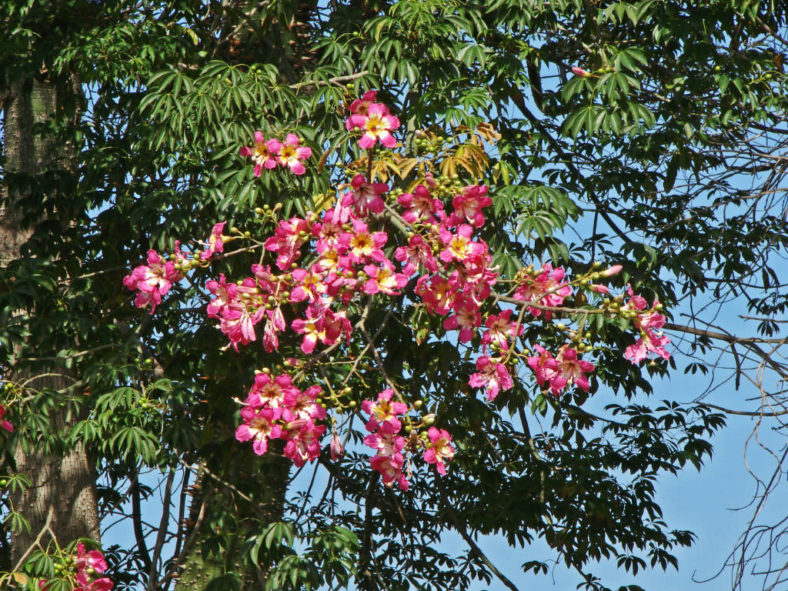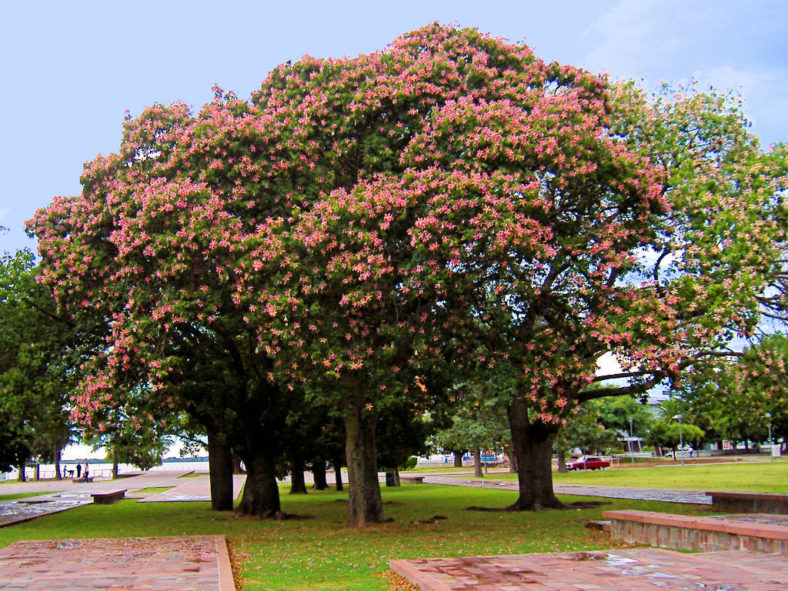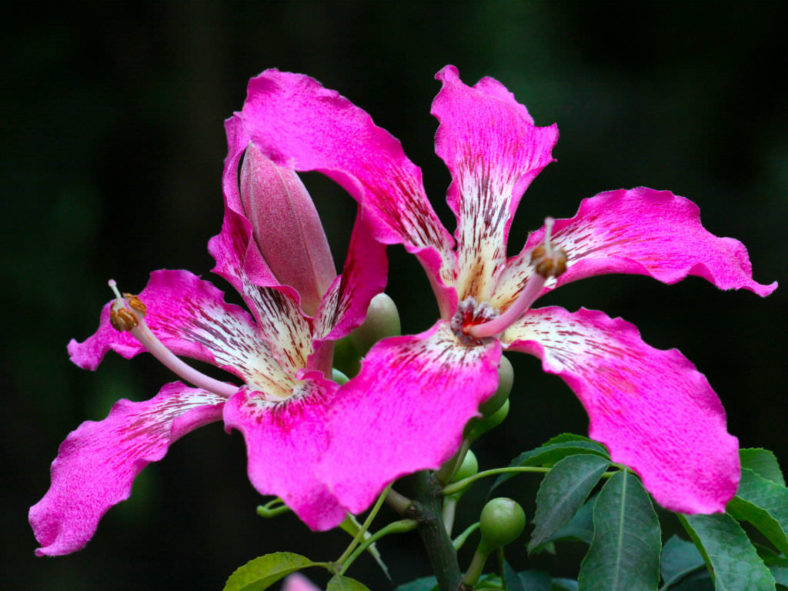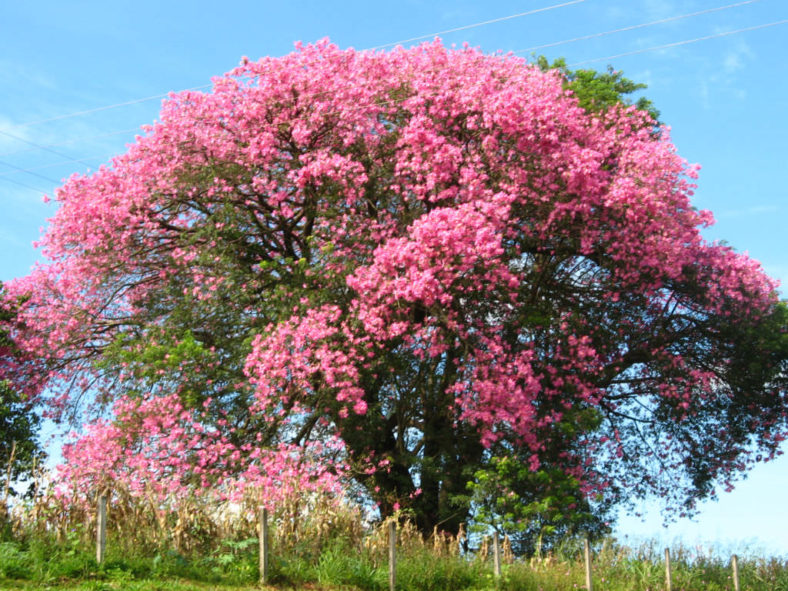Scientific Name
Ceiba speciosa (A.St.-Hil.) Ravenna
Common Name(s)
Silk Floss Tree, Floss Silk Tree
Synonym(s)
Bombax aculeatum, Chorisa speciosa, Chorisia speciosa, Spirotheca rimbachii
Scientific Classification
Family: Malvaceae
Subfamily: Bombacoideae
Genus: Ceiba
Description
Ceiba speciosa, formerly known as Chorisia speciosa, is a large, semi-deciduous tree with several unique and attractive characteristics. It can grow up to 60 feet (18 m) tall and up to 30 feet (10 m) wide, but the large studded conical prickles on the greenish trunk and branches are most noticeable. The branches hold a palmately compound leaf with 6 to 8 leaflets reaching up to 5 inches (12.5 cm) long.
The flowers are large, showy, pale pink to rose-colored, with five frilly petals and cream to yellow center. They appear in summer into fall.
In its native habitat, Ceiba speciosa has been harvested for many uses. The cotton inside the capsules has been used as stuffing. The wood can be used to make canoes, as wood pulp, and make paper. The bark has been used to make ropes. From the seeds, it is possible to obtain vegetable oil.

Hardiness
USDA hardiness zones 9a to 11b: from 20 °F (−6.7 °C) to 50 °F (+10 °C).
How to Grow and Care
When planting a Silk Floss Tree, care should be taken to situate at least 15 feet (4.5 m) away from the eaves to account for growth and well away from foot traffic and play areas due to the thorny trunk.
Silk Floss Tree care is possible in USDA plant hardiness zones 9 to 11, as saplings are frost sensitive, but mature trees can withstand temperatures of 20 °F (-7 °C) for limited periods. Planting a Silk Floss Tree should occur in full sun with consistent moisture in humus-rich, well-drained soils. It tolerates some light shade but flowers best in full sun. Trees with established root systems have some drought tolerance. The leaves drop when temperatures sink below 27 °F (-3 °C).
Care of Silk Floss Tree should include moderate irrigation with a reduction in the winter. Transplants are readily available in suitable climate areas, or seeds can be sown from spring to early summer.
The eventual size should be considered when planting a Silk Floss Tree, as the leaf drop and fruit pod detritus can be hard on lawnmowers. These trees are also often affected by scale insects.
It is difficult to propagate this plant from seed or cuttings. Sow seeds from spring to early summer. Germination may take from 2 to 6 weeks.
Origin
Ceiba speciosa is native to the tropical and subtropical forests of South America.
Links
- Back to genus Ceiba
- Succupedia: Browse succulents by Scientific Name, Common Name, Genus, Family, USDA Hardiness Zone, Origin, or cacti by Genus
Photo Gallery
Click on a photo to see a larger version.



